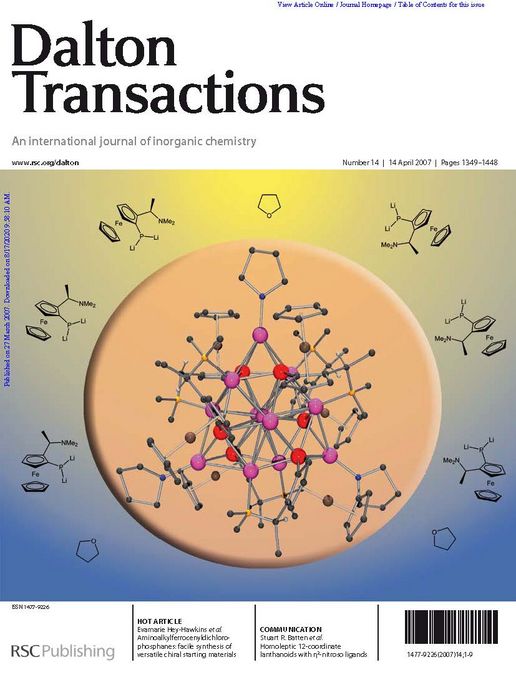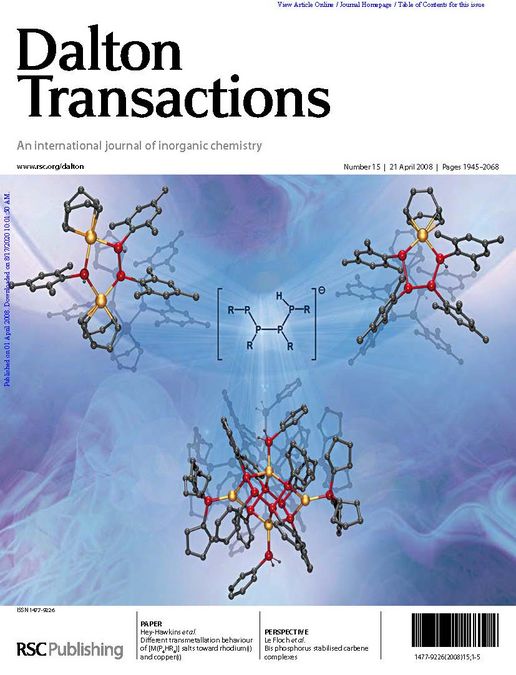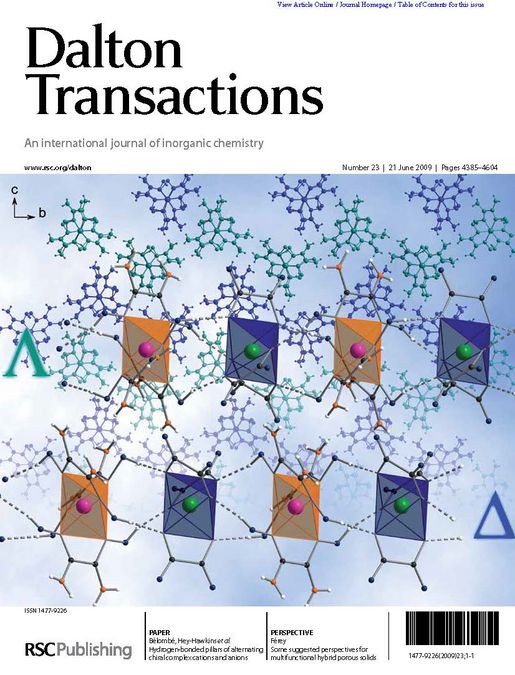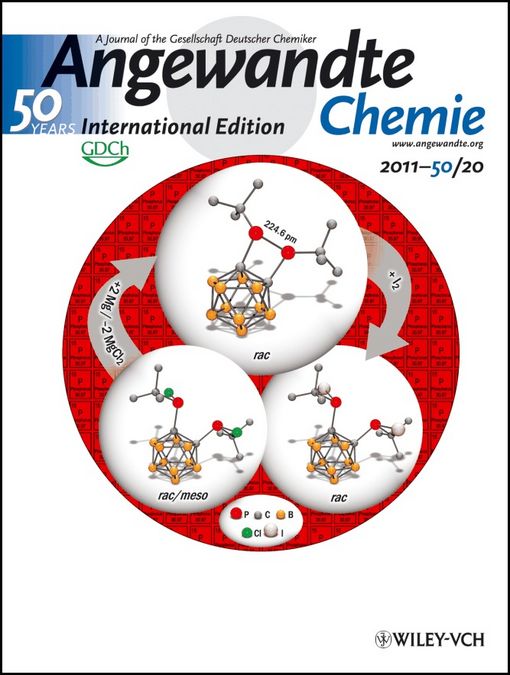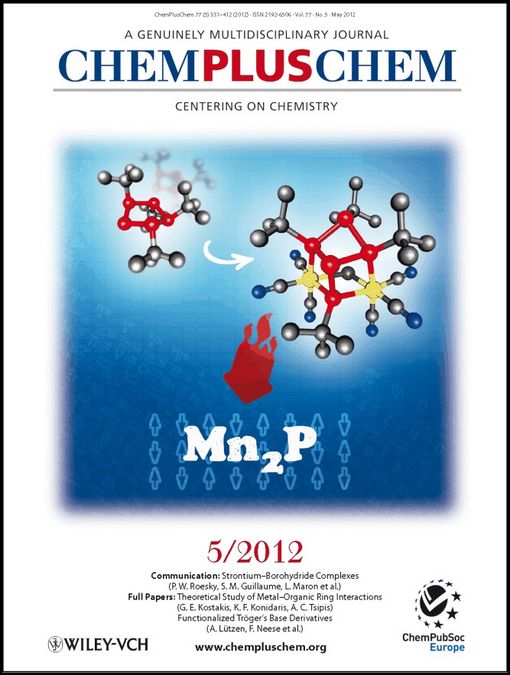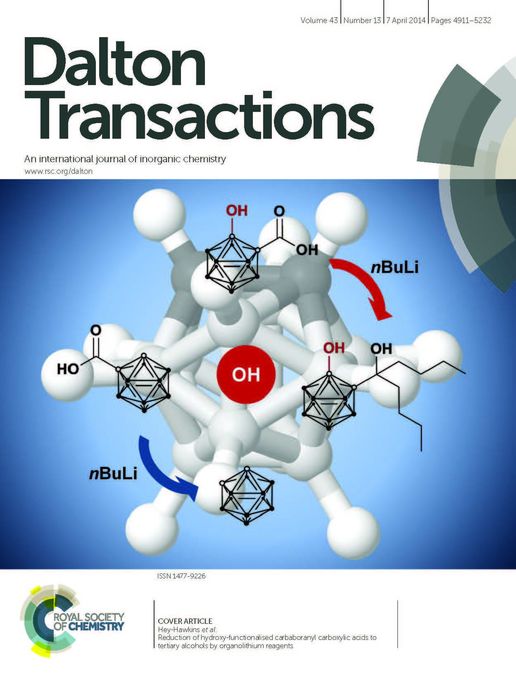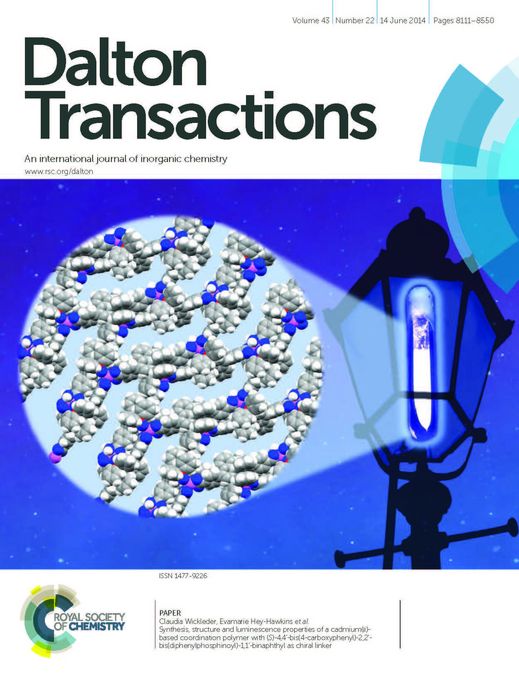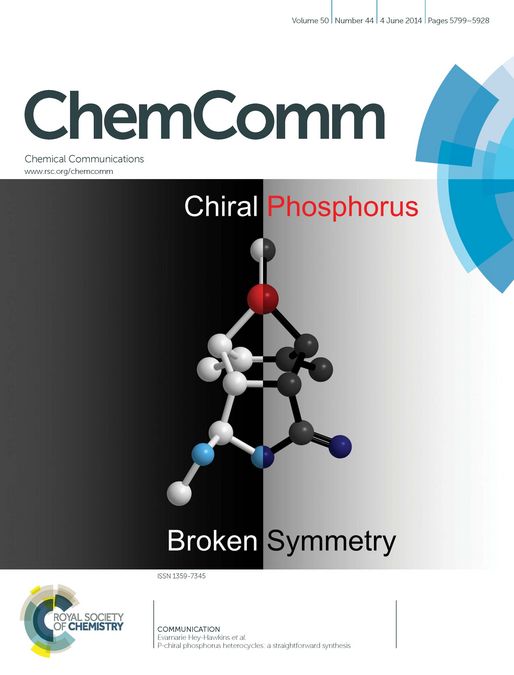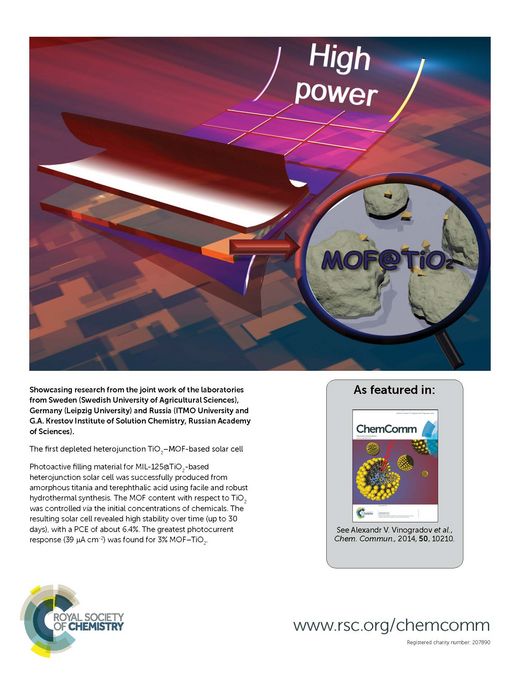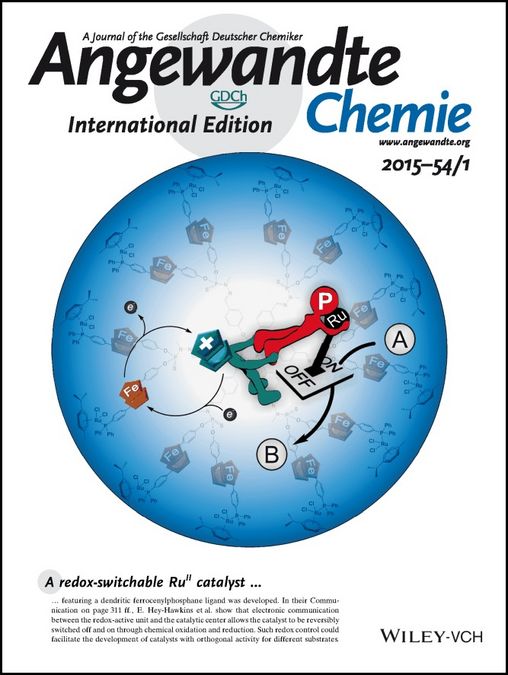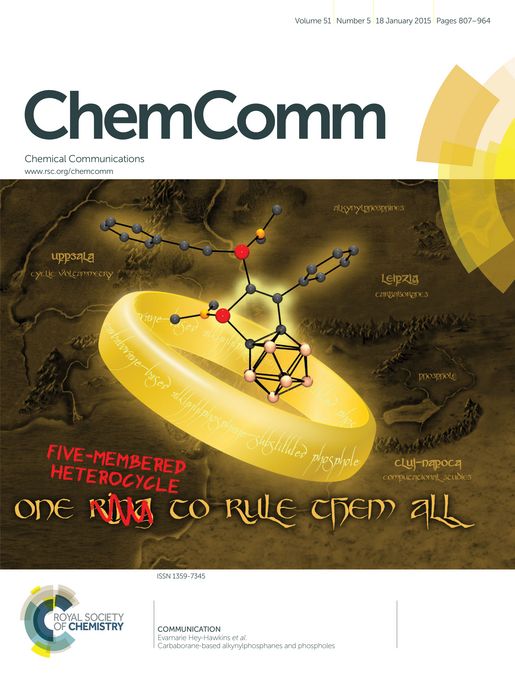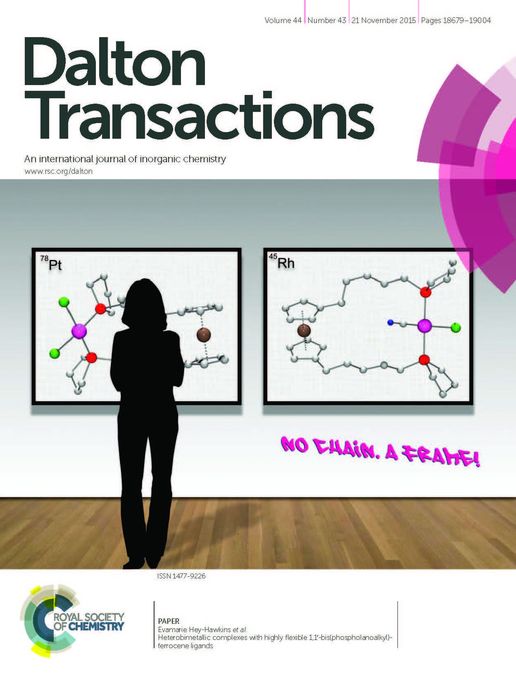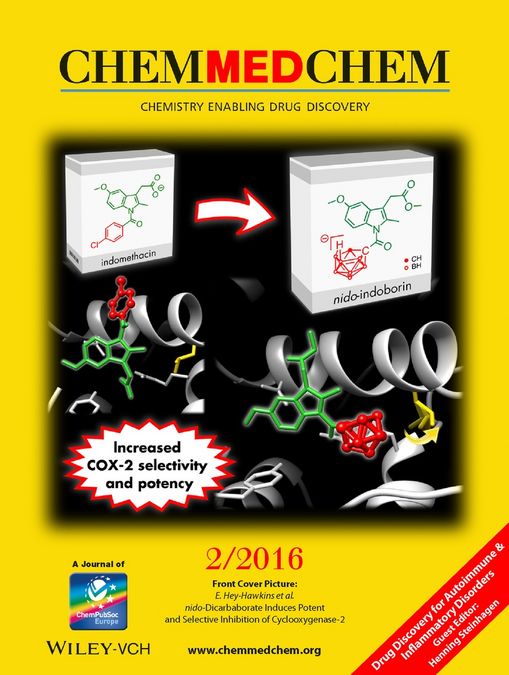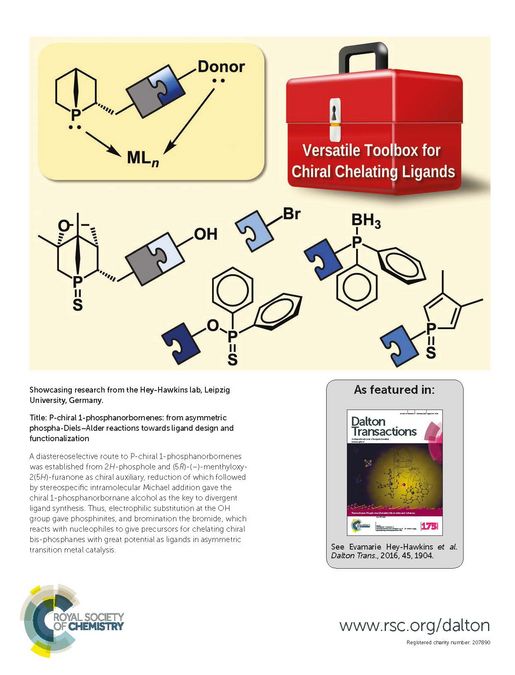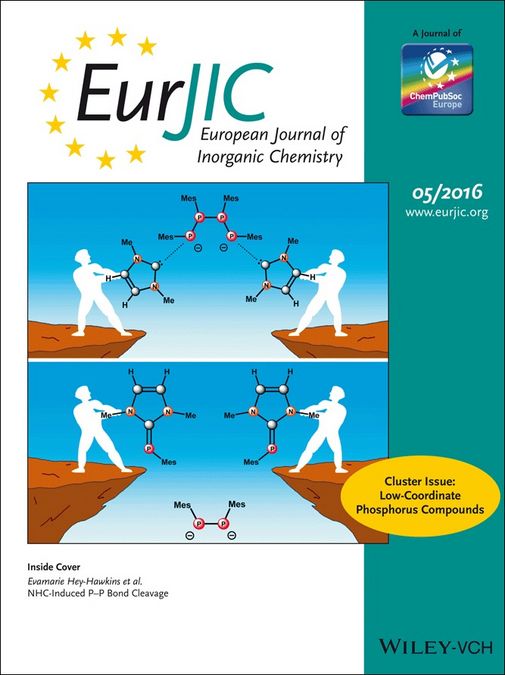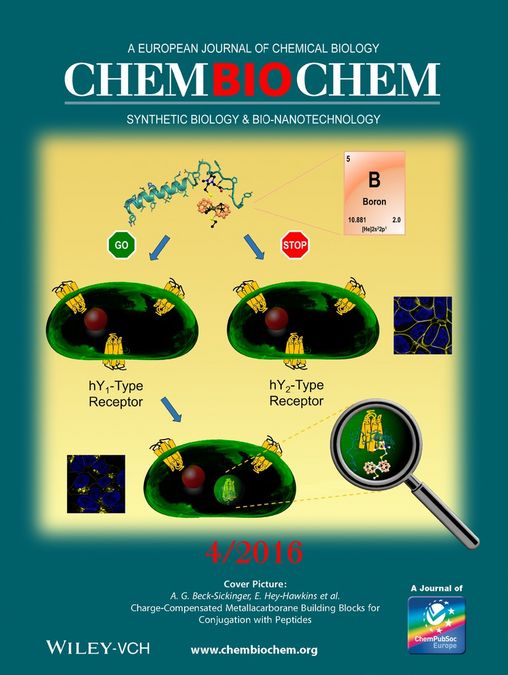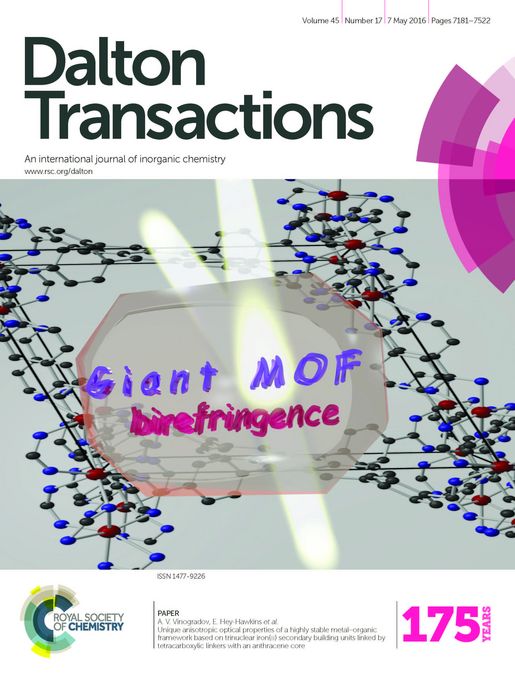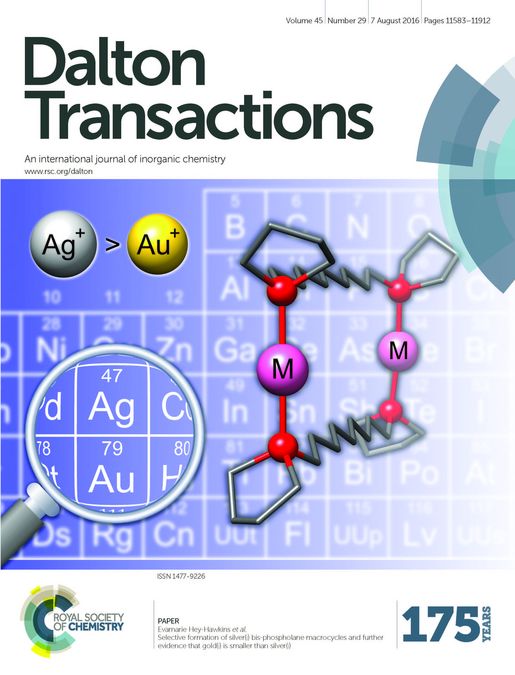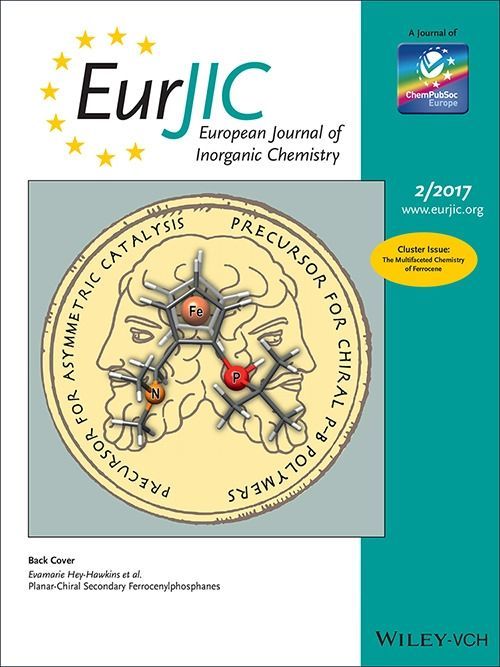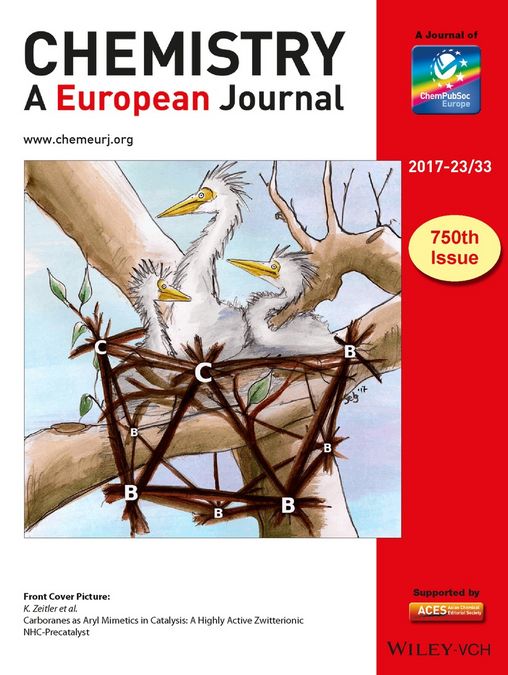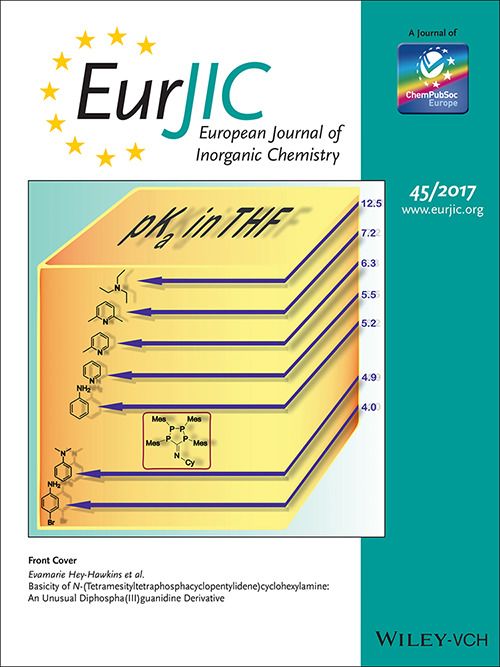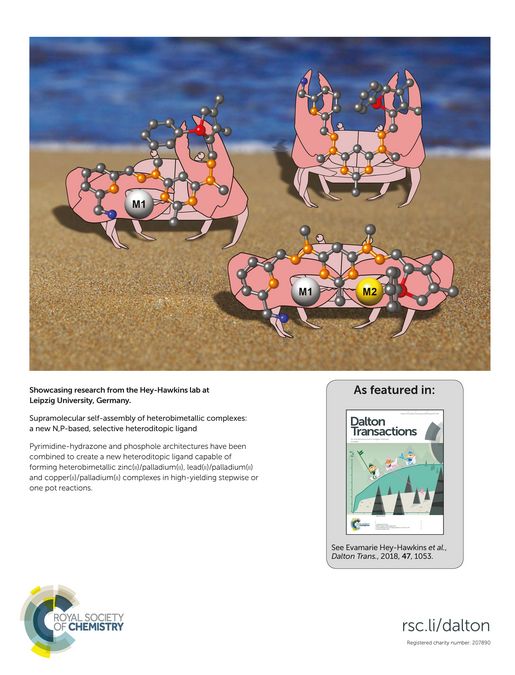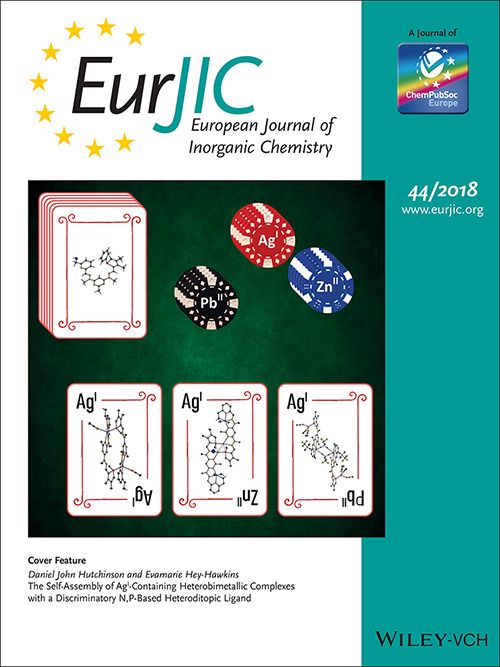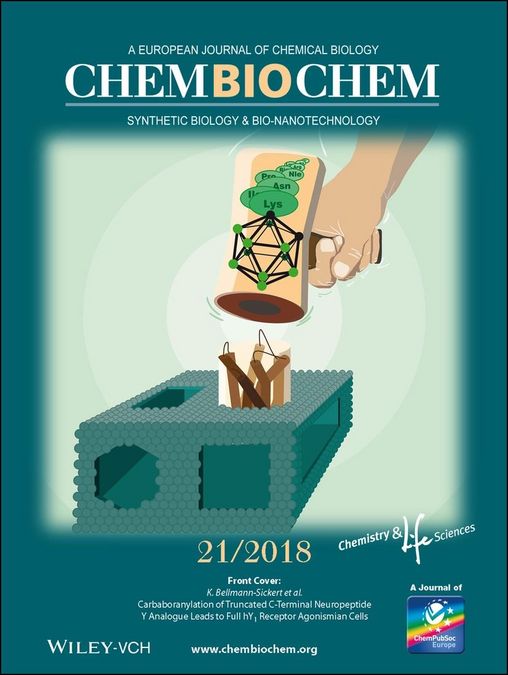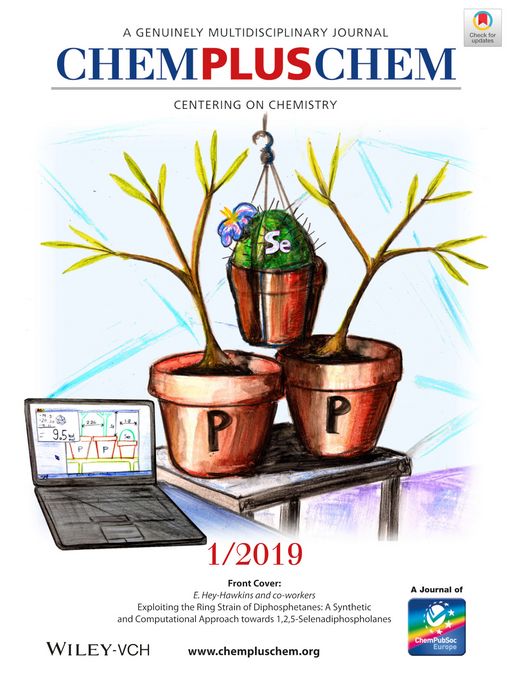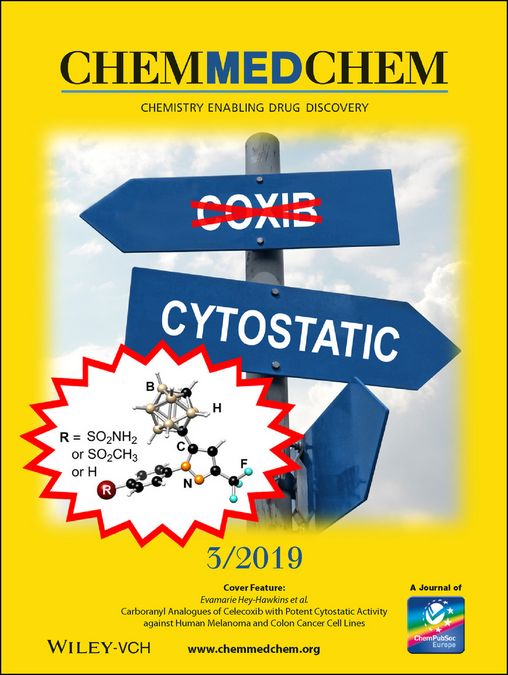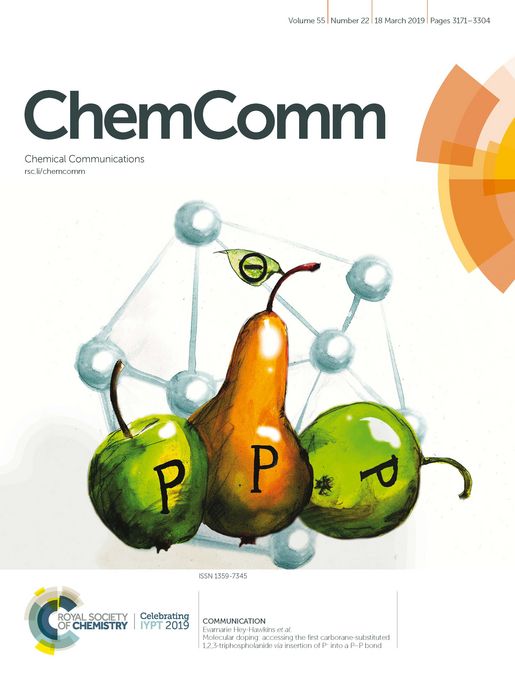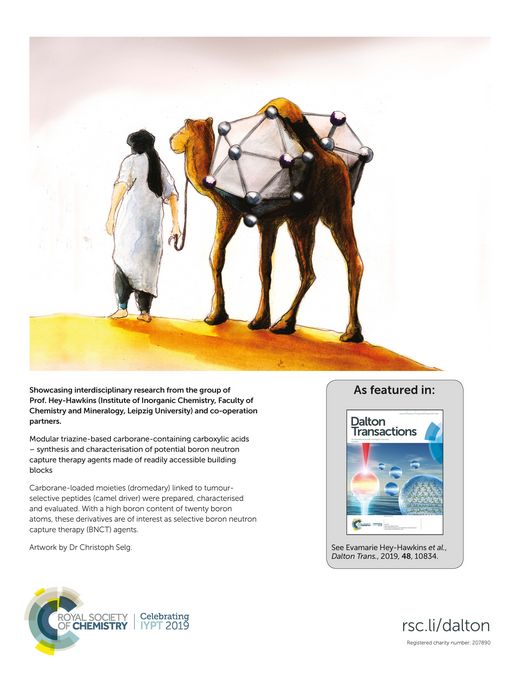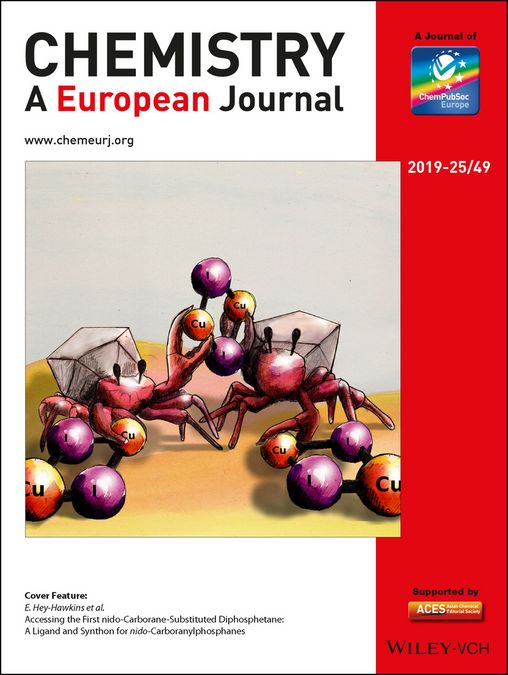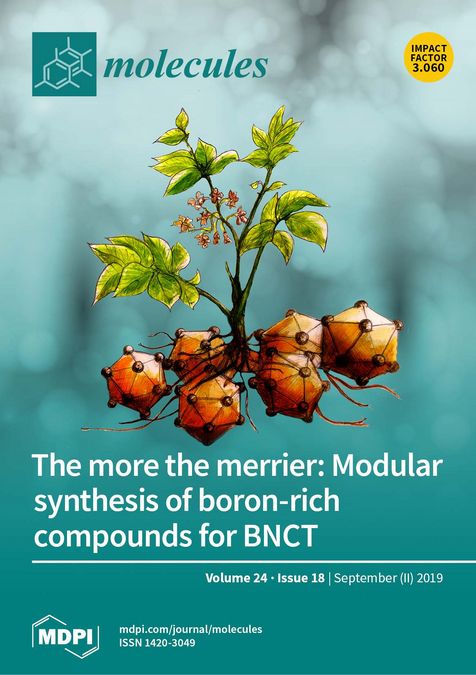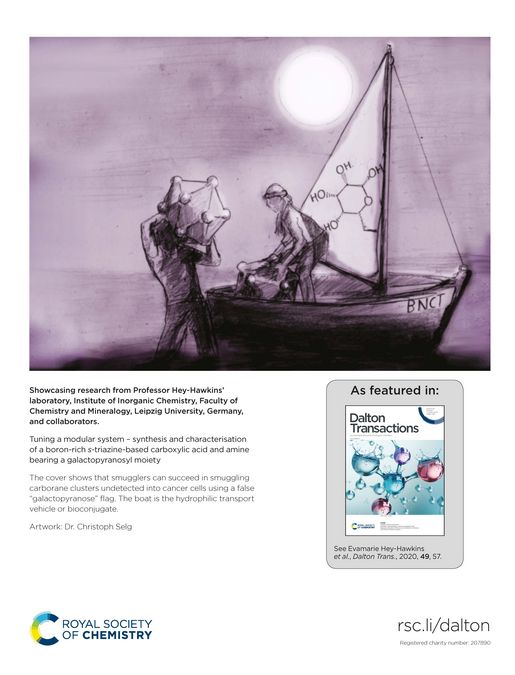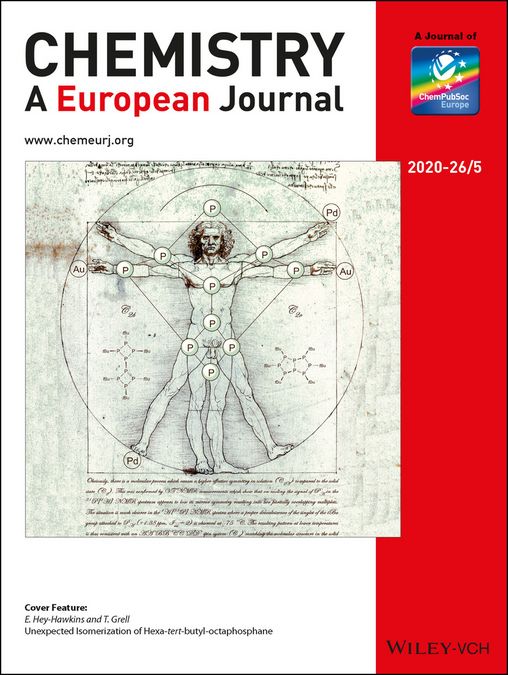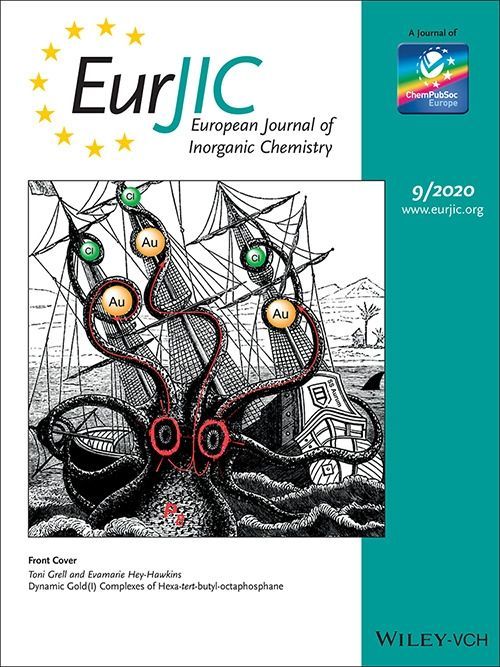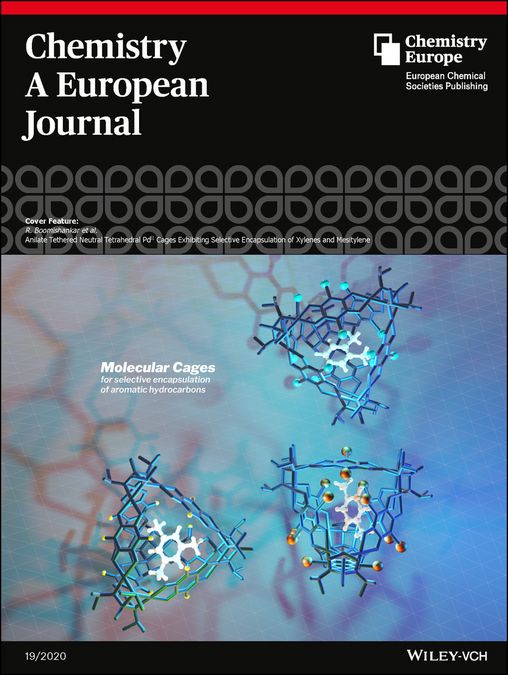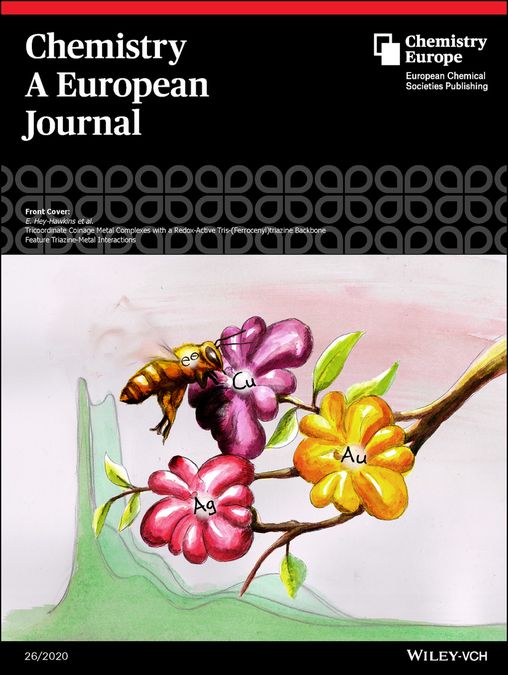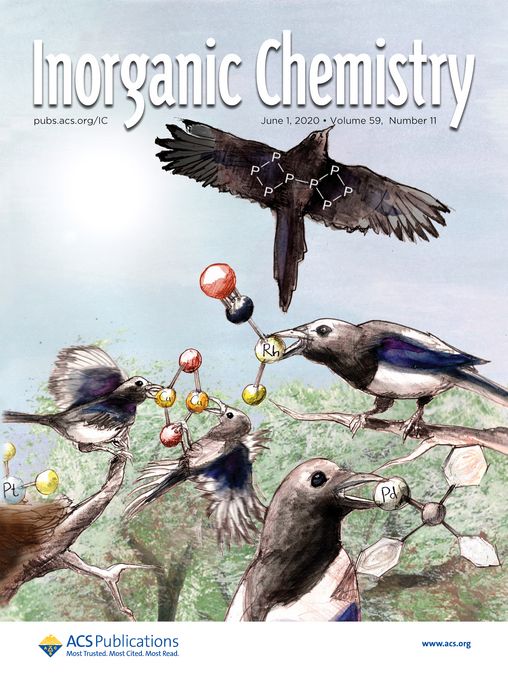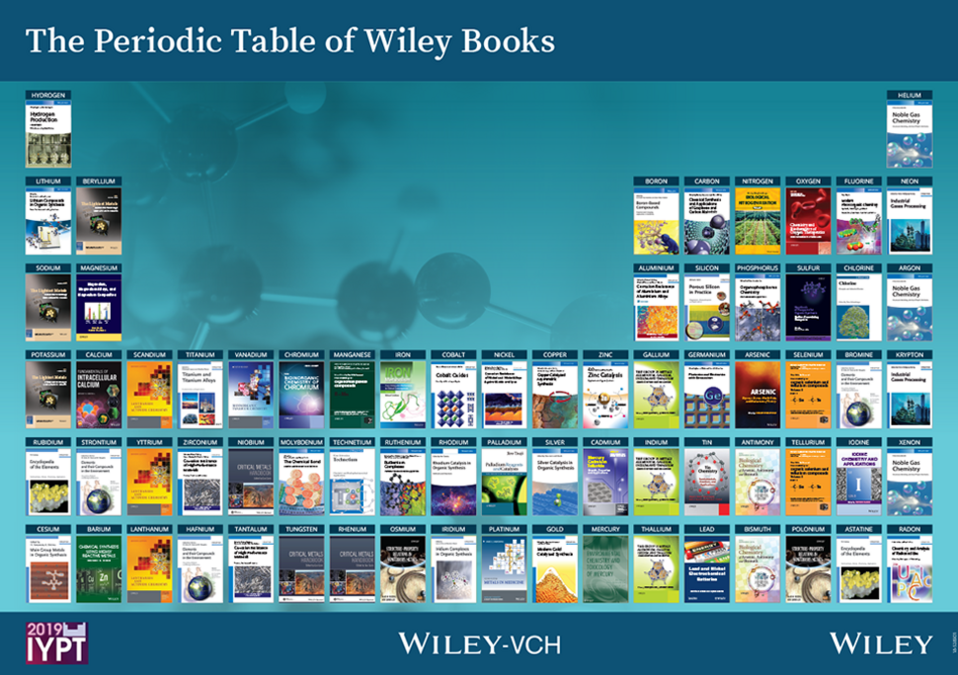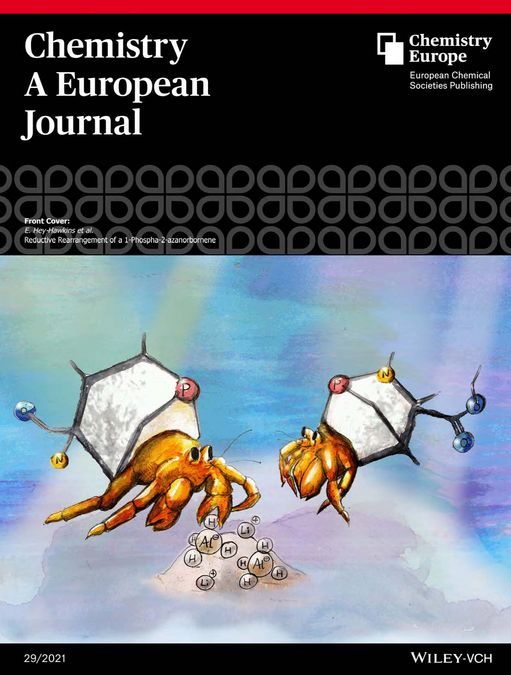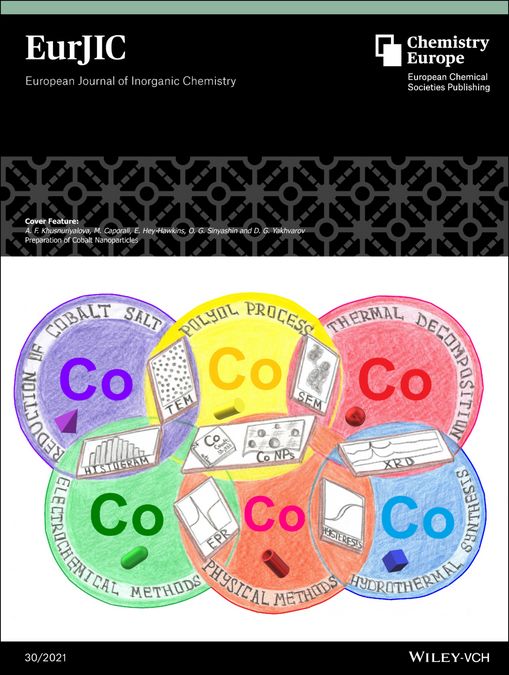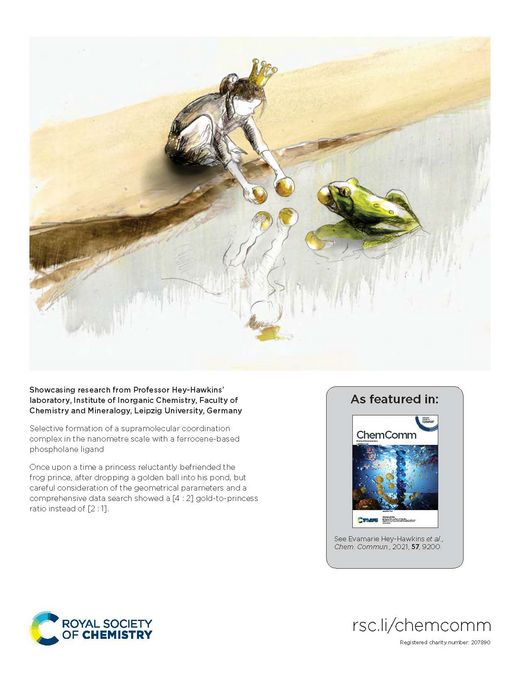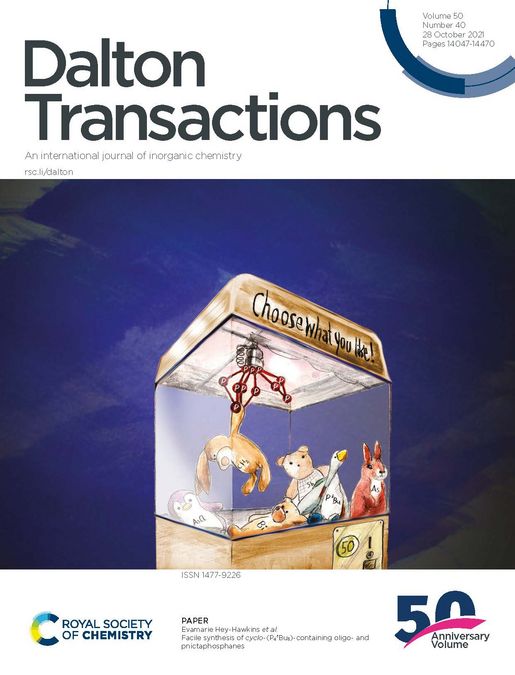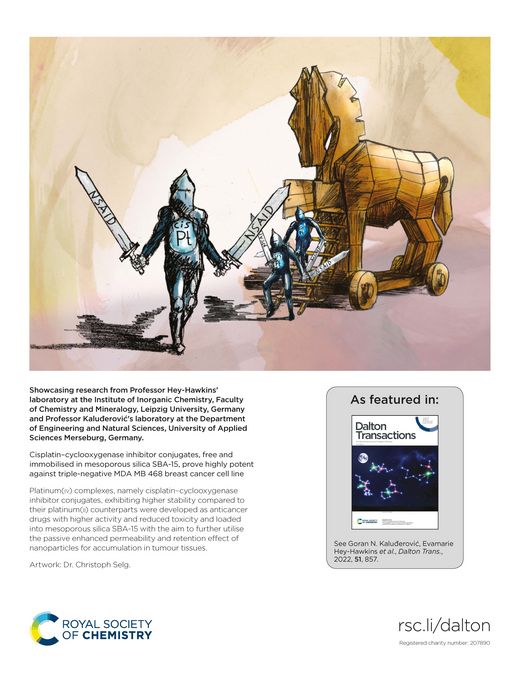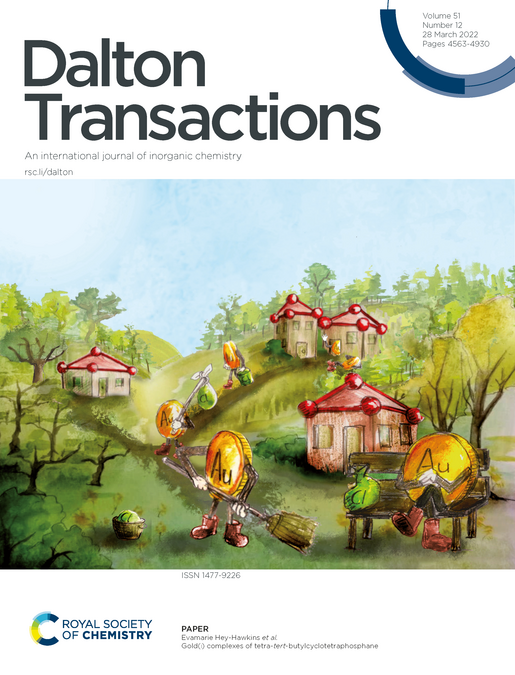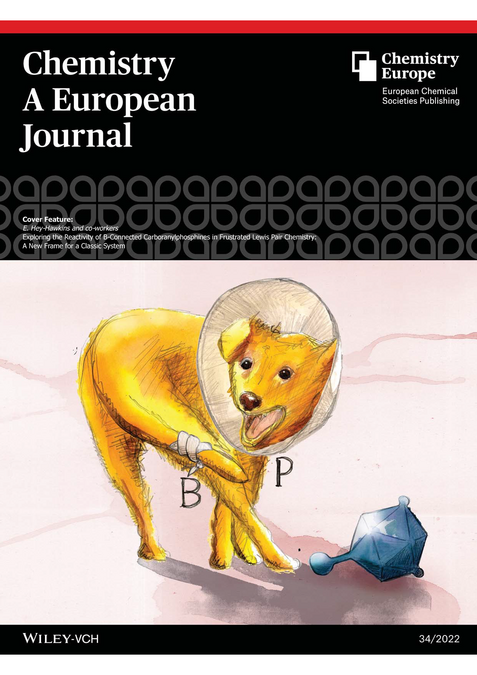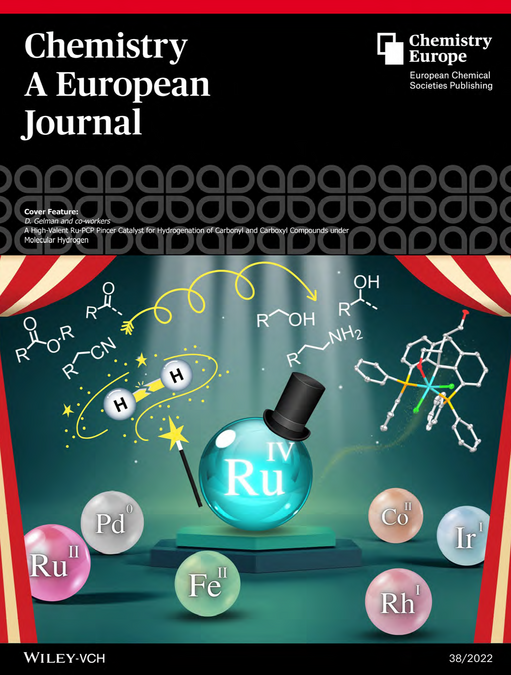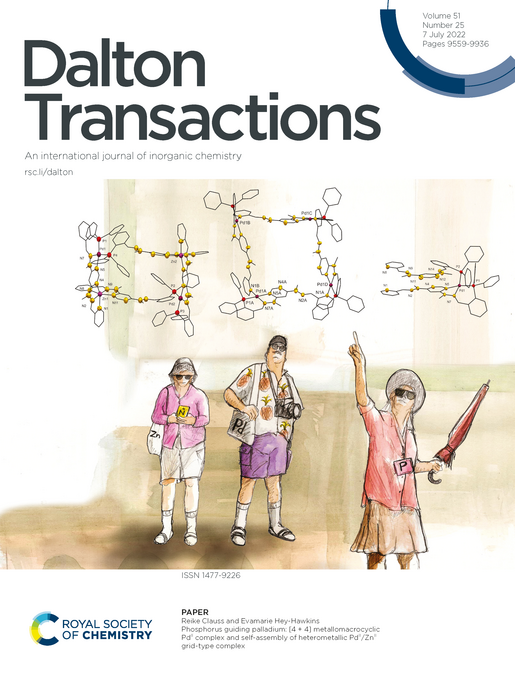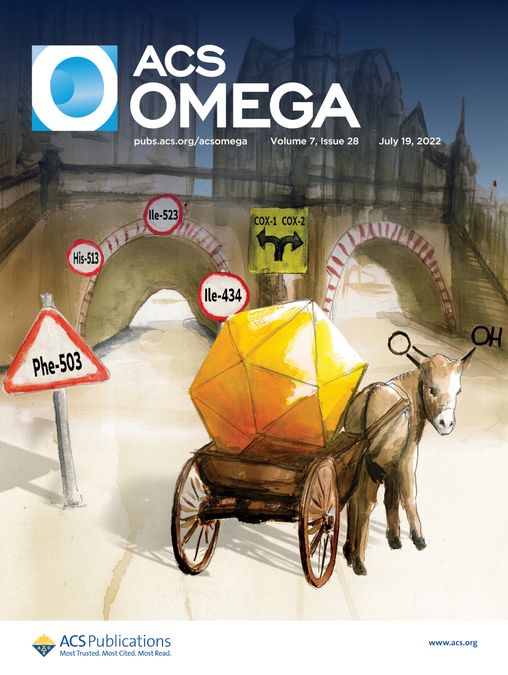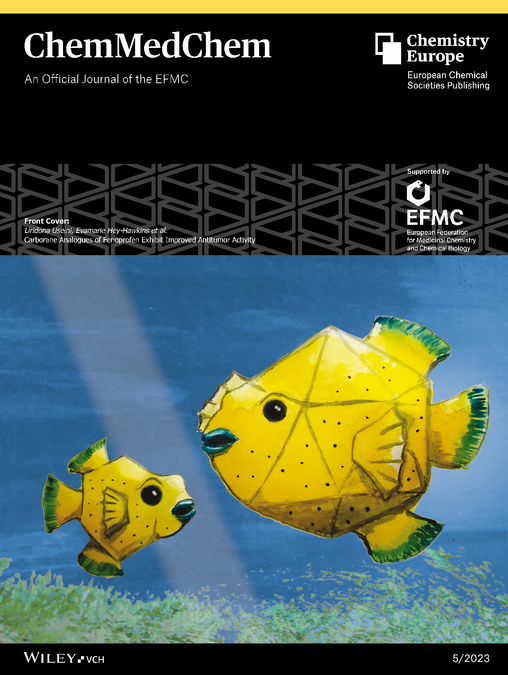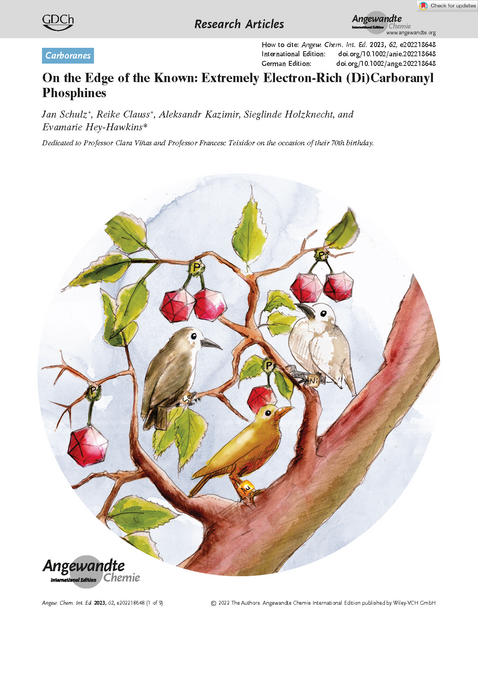Our research interests: homogeneous catalysis with mono- and multinuclear transition metal complexes; medicinal chemistry with inorganic compounds; precursors for materials science.
Our research projects
The Hey-Hawkins group was one of the first to use the reactive transition metal-phosphorus bond in metal phosphanido complexes[1a] for the synthesis of novel phosphorus-based ligands in the coordination sphere of a transition metal.[1b] More recently, the synthesis of functionalised ferrocenyl phosphines,[2a] especially chiral primary ferrocenyl phosphines[2b] has attracted much attention. These are highly versatile starting materials for chiral tertiary ferrocenyl phosphines via asymmetric organometallic synthesis[2c] and are also suitable precursors for a novel type of heterometallic hybrid materials.[2d] Recently, we reported the first switchable, catalytically active dendritic ferrocenyl phosphines,[2e] followed by the first C3 symmetrical switchable redox-active tris(ferrocenylphosphine)triazine or -arene ligands.[2f]
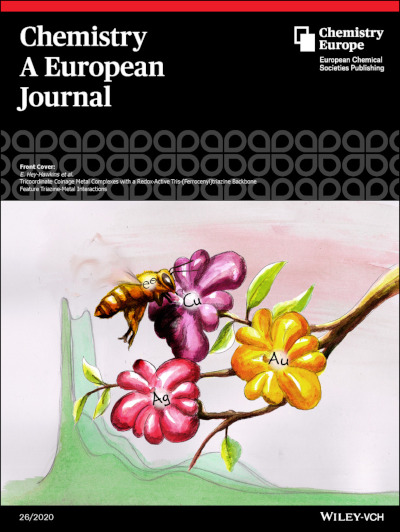
Furthermore, we have succeeded in providing a facile route to long-sought strained four-membered phosphorus heterocycles, i.e., diphosphetanes,[3a] and have shown their remarkable reactivity.[3b] With these studies we have paved the way for the exploration of this exciting new class of strained P-based heterocycles. Recent highlights include the oxidative P‒P bond addition to cobalt(‒I) with formation of an unusual low spin cobalt(III) phosphanido complex[4] or the formation of a sixteen-membered Au8P8 macrocycle[5].
The Hey-Hawkins group was also the first to report on an asymmetric phospha-Diels-Alder reaction of phospholes[6] resulting in a plethora of chiral mono- and bidentate P-based ligands. An extension to a phospha-aza-Diels-Alder reaction followed.[7] In addition to highly interesting basic research, these compounds have also great potential as ligands for transition metal complexes in homogeneous catalysis.
Another approach focuses on the use of selective phosphorus-based macrocycles, nano-frames or containers[8] as receptors for catalytically active transition metals, generating molecular nanosized reactors that should allow specific interactions of the cavity with substrates during a catalytic process. Variation of the coordinated metal atom or the size of the cavity influence the selectivity in catalytic processes.
Furthermore, metal-organic frameworks (MOFs) with well-defined structures and porosity can be used for sensing, generating specific optical properties[9] or as selective drug delivery[10].
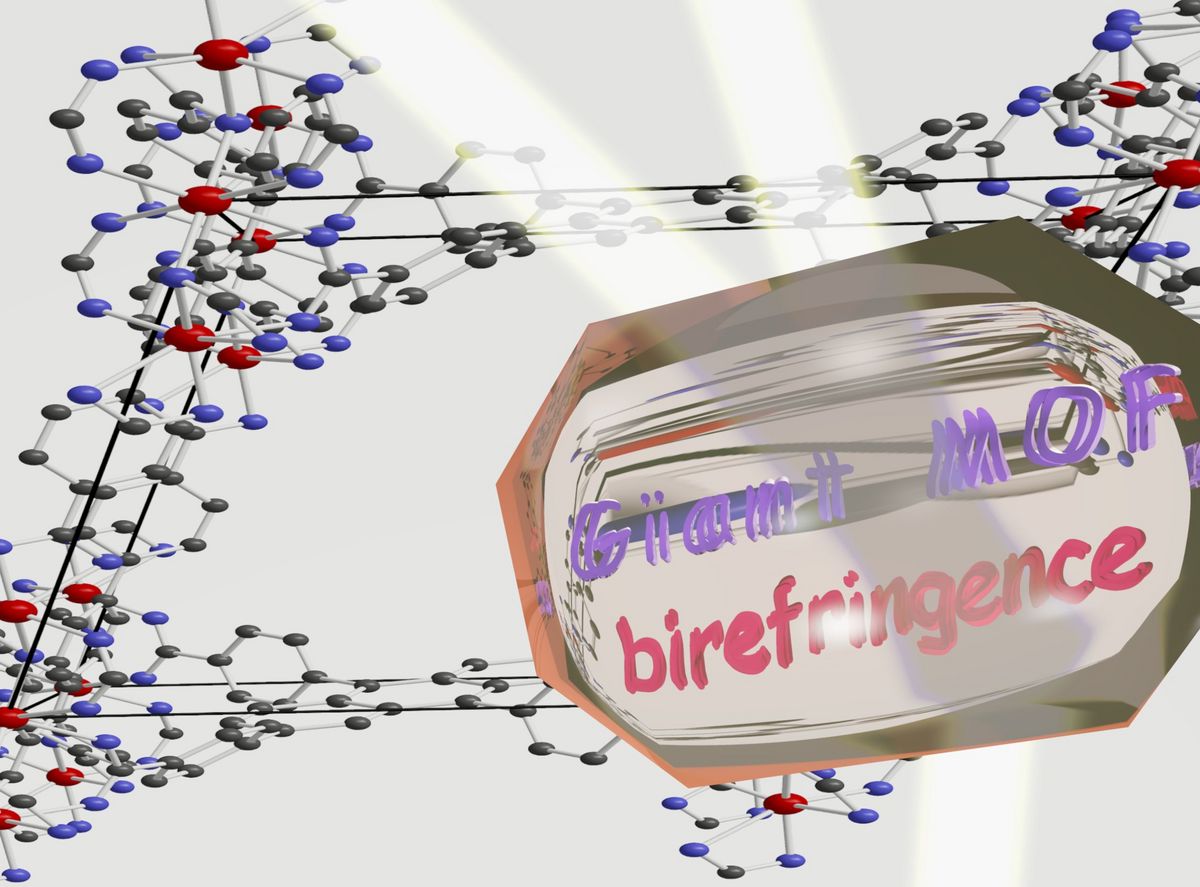
Complexes containing two different metal centres are highly attractive in catalysis since cooperative and synergistic effects open new reaction pathways by simultaneously activating one or more substrates or two reacting functional groups. The Hey-Hawkins group has successfully designed heteroditopic ligands[11a,b] with distinct coordination sites which distinguish between two metal ions and can be used in the synthesis of well-defined heterobimetallic complexes.[11c] Current work focuses on NP-based ligand systems and their application in homogeneous catalysis for CO2 hydrogenation, co-polymerisation reactions and tandem catalysis.
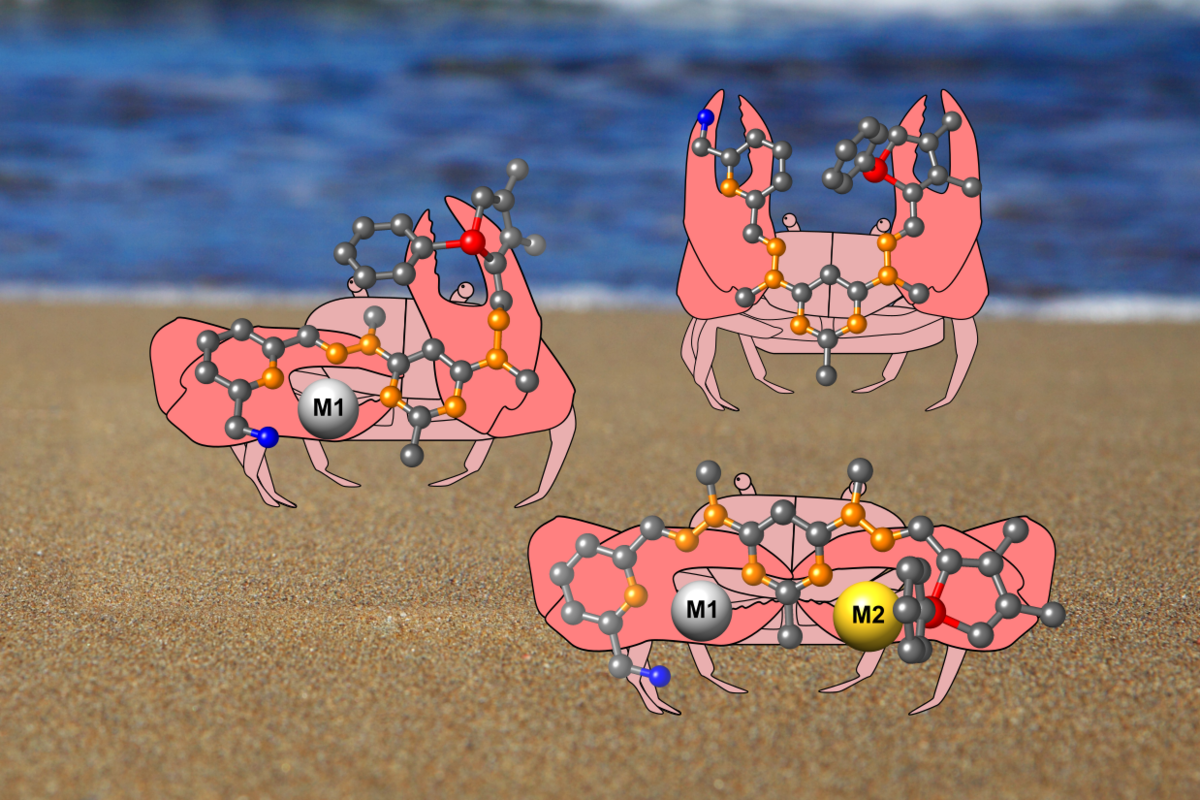
References
- [1] a) E. Hey-Hawkins, Chem. Rev. 94 (1994) 1661-1717; b) E. Hey, M. F. Lappert, J. L. Atwood, S. G. Bott, J. Chem. Soc., Chem. Commun. (1987) 597-599.
- [2] a) S. Tschirschwitz, P. Lönnecke, E. Hey-Hawkins, Dalton Trans. (2007) 1377-1382, Cover; b) C. Limburg, P. Lönnecke, S. Gómez-Ruiz, E. Hey-Hawkins, Organometallics 29 (2010) 5427-5434; c) S. Tschirschwitz, P. Lönnecke, E. Hey-Hawkins, Organometallics 26 (2007) 4715-4724; d) S. Tschirschwitz, P. Lönnecke, J. Reinhold, E. Hey-Hawkins, Angew. Chem. 117 (2005) 3025-3029; Angew. Chem. Int. Ed. 44 (2005) 2965-2969; e) P. Neumann, H. Dib, A.-M. Caminade, E. Hey-Hawkins, Angew. Chem. Int. Ed. 54 (2015) 311-314, Inside back cover; f) A. Straube, P. Coburger, M. R. Ringenberg, E. Hey-Hawkins, Chem. Eur. J. 26 (2020) 5758-5764, Front Cover and Cover Profile.
- [3] a) A. Kreienbrink, M. B. Sárosi, E. Rys, P. Lönnecke, E. Hey-Hawkins, Angew. Chem. 123 (2011) 4798-4800; Angew. Chem. Int. Ed. 50 (2011) 4701-4703, Back Cover; b) A. Kreienbrink, S. Heinicke, Thi Thuy Duong Pham, R. Frank, P. Lönnecke, E. Hey-Hawkins, Chem. Eur. J. 20 (2014) 1434-1439.
- [4] P. Coburger, S. Demeshko, C. Rödl, E. Hey-Hawkins, R. Wolf, Angew. Chem. Int. Ed. 56 (2017) 15871-15875; Angew. Chem. 129 (2017) 16087-16091.
- [5] A. K. Adhikari, M. B. Sárosi, T. Grell, P. Lönnecke, E. Hey-Hawkins, Angew. Chem. Int. Ed. 56 (2017) 4061-4064; Angew. Chem. 129 (2017) 4120-4123.
- [6] a) T. Möller, M. B. Sárosi, E. Hey-Hawkins, Chem. Eur. J. 18 (2012) 16604-16607; b) T. Möller, P. Wonneberger, N. Kretzschmar, E. Hey-Hawkins, Chem. Commun. 50 (2014) 5826-5828.
- [7] P. Wonneberger, N. König, F. B. Kraft, M. B. Sárosi, E. Hey-Hawkins, Angew. Chem. Int. Ed. 58 (2019) 3208-3211; Angew. Chem. 131 (2019) 3240-3244.
- [8] a) E. Musina, T. Wittmann, S. Latypov, S. Kondrashova, P. Lönnecke, I. Litvinov, E. Hey-Hawkins, A. Karasik, Eur. J. Inorg. Chem. (2019) 3053-3060; b) R. Hoy, P. Lönnecke, E. Hey-Hawkins, Dalton Trans. 47 (2018) 14515-14520; c) P. Boar, M. Streitberger, P. Lönnecke, E. Hey-Hawkins, Inorg. Chem. 56 (2017) 7285-7291; d) E. I. Musina, T. I. Wittmann, A. B. Dobrynin, P. Lönnecke, E. Hey-Hawkins, A. A. Karasik, O. G. Sinyashin, Pure Appl. Chem. 89 (2017) 331-339; e) R. Hoy, T. Grell, P. Lönnecke, E. Hey-Hawkins, Chem. Commun. 57 (2021) 9200-9203, Back Cover.
- [9] L. R. Mingabudinova, A. A. Vinogradov, V. A. Milichko, A. V. Vinogradov, E. Hey-Hawkins, invited contribution to special issue “Smart Inorganic Polymers”, Chem. Soc. Rev. 45 (2016) 5408-5431.
- [10] a) V. V. Vinogradov, A. S. Drozdov, L. R. Mingabudinova, E. M. Shabanova, N. O. Kolchina, E. I. Anastasova, A. A. Markova, A. A. Shtil, V. A. Milichko, G. L. Starova, R. L. M. Precker, A. V. Vinogradov, E. Hey-Hawkins, E. A. Pidko, J. Mater. Chem. B 6 (2018) 2450-2459; b) A. Valente, R. L. M. Precker, E. Hey-Hawkins, in: Smart Inorganic Polymers: Synthesis, Properties, and Emerging Applications in Materials and Life Sciences, ed. E. Hey-Hawkins and M. Hissler, ISBN:9783527819140, Wiley-VCH Verlag GmbH & Co. KGaA, pp. 243-276, 2019.
- [11] a) D. J. Hutchinson, R. Clauss, M.-B. Sárosi, E. Hey-Hawkins, Dalton Trans. 47 (2018) 1053-106; b) D. J. Hutchinson, E. Hey-Hawkins, Eur. J. Inorg. Chem. (2018) 4790-4796; c) R. Clauss, A. Kazimir, A. Straube, E. Hey-Hawkins, Inorg. Chem. 60 (2021) 8722-8733.
Compounds with high phosphorus content such as alkali metal oligophosphanides are highly attractive due to their reactivity and interesting structural properties.[12a,b] Furthermore, the corresponding transition metal complexes could be suitable precursors for binary metal phosphides, which have a wide range of applications such as corrosion resistors, catalysts for hydrodesulfurisation and hydrodenitrogenation, oxygen barriers, semiconductors, magnetic materials, and anode materials in lithium ion batteries. During the past two decades, the Hey-Hawkins group has pioneered this synthetically highly challenging area with striking contributions in the field of phosphorus-rich transition metal complexes and has shown their use as precursors for binary metal phosphides.[12c-e]
More recently, facile synthetic routes to neutral oligophosphines, such as octaphosphines, have been developed, facilitating their use in versatile coordination chemistry as well as providing precursors for phosphorus-rich metal phosphides.[13]
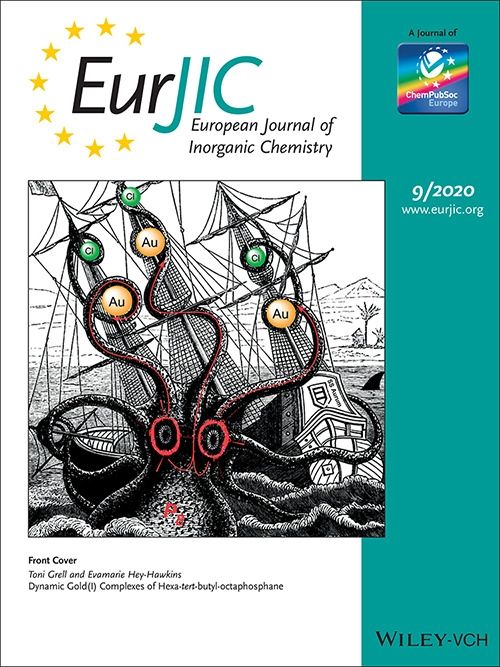
References
- [12] a) A. Schisler, P. Lönnecke, U. Huniar, R. Ahlrichs, E. Hey-Hawkins, Angew. Chem. Int. Ed. 40 (2001) 4217-4219; b) R. Wolf, E. Hey-Hawkins, Angew. Chem. Int. Ed. 44 (2005) 6241-6244; c) S. Gómez-Ruiz, E. Hey-Hawkins, Coord. Chem. Rev. 255 (2011) 1360-1386; d) V. J. Eilrich, E. Hey-Hawkins, Coord. Chem. Rev. 437 (2021) 213749; e) V. J. Eilrich, T. Grell, P. Lönnecke, E. Hey-Hawkins, Dalton Trans. (2021) (in print) DOI: 10.1039/D1DT026 39A, Front Cover.
- [13] a) T. Grell, E. Hey-Hawkins, Chem. Eur. J. 26 (2020) 1008-1012; b) T. Grell, E. Hey-Hawkins, Europ. J. Inorg. Chem. (2020) 732–736, Front Cover and Cover Profile; c) T. Grell, E. Hey-Hawkins, Inorg. Chem. 59 (2020) 7487-7503, Front Cover.
The Hey-Hawkins group has been involved in carborane chemistry for more than 20 years. Thus, we were one of the first research groups to use carboranes as electron-poor backbone in bis-phosphine ligands for catalysis, and have reviewed this area for the book on Boron Science, New Technologies and Applications.[14] Furthermore, the use of carborane derivatives in organocatalysis has recently been demonstrated.[15]
The Hey-Hawkins group has also made important contributions concerning the use of carboranes as pharmacophores, specifically by replacement of phenyl rings in pharmaceuticals,[16] e.g., in COX inhibitors[17] and LOX inhibitors[18]. Prof. Hey-Hawkins has also co-edited a book on Boron-Based Compounds: Potential and Emerging Applications in Medicine[19] with Wiley in 2018.

In the field of boron neutron capture therapy (BNCT) the Hey-Hawkins group is one of the leading research groups in Germany[20]. Here, carboranes and its derivatives, which were used as the boron sources in this therapy, were highly modified and incorporated in tumour-selective biomolecules. Research, in cooperation with the Beck-Sickinger group, lead to promising results in peptide-assisted BNCT.[21] More recent approaches focus on the application of less complex biomolecules like small molecule receptor agonists to open up a broader area of potential BNCT drugs.
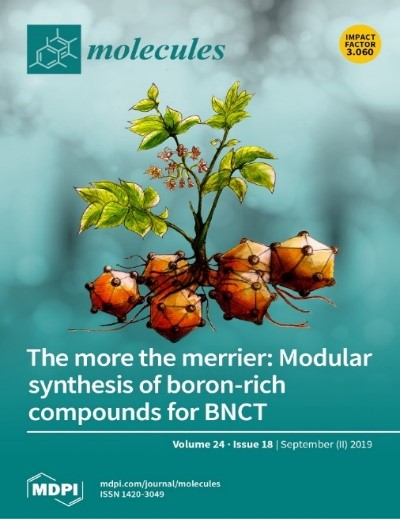
References
- [14] S. Bauer, E. Hey-Hawkins, in: Boron Science, New Technologies and Applications, chapter 22, ed. N. S. Hosmane, ISBN 978-1-4398266-3-8, CRC Press: Boca Raton, FL, USA, 2012, 529-577.
- [15] S. Selg, W. Neumann, P. Lönnecke, E. Hey-Hawkins, K. Zeitler, Chem. Eur. J. 23 (2017) 7932-7937, Front Cover.
- [16] a) P. Stockmann, M. Gozzi, R. Kuhnert, M. B. Sárosi, E. Hey-Hawkins, Chem. Soc. Rev. 48 (2019) 3497-3512; b) M. Scholz, E. Hey-Hawkins, Chem. Rev. 111 (2011) 7035-7062
- [17] A. Buzharevski, S. Paskas, M.-B. Sárosi, M. Laube, P. Lönnecke, W. Neumann, B. Murganić, S. Mijatović, D. Maksimović-Ivanić, J. Pietzsch E. Hey-Hawkins, Sci. Rep. (2020) 10:4827.
- [18] a) R. Kuhnert, M.-B. Sárosi, S. George, P. Lönnecke, B. Hofmann, D. Steinhilber, B. Murganic, S. Mijatovic, D. Maksimovic-Ivanic, E. Hey-Hawkins, ChemMedChem 12 (2017) 1081-1086; b) R. Kuhnert, M.-B. Sárosi, S. George, P. Lönnecke, B. Hofmann, D. Steinhilber, S. Steinmann, R. Schneider-Stock, B. Murganić, S. Mijatović, D. Maksimović-Ivanić, E. Hey-Hawkins, ChemMedChem 14 (2019) 255-261.
- [19] Boron-Based Compounds: Potential and Emerging Applications in Medicine, ed. E. Hey-Hawkins and C. Viñas Teixidor, ISBN 9781119275558, Wiley, 2018.
- [20] M. Kellert, E. Hey-Hawkins, Mitteilungen der Wilhelm-Ostwald-Gesellschaft e.V. 25/1 (2020) 26-50; ISSN 1433-3910.
- [21] a) D. J. Worm, S. Els-Heindl, M. Kellert, R. Kuhnert, S. Saretz, J. Koebberling, B. Riedl, E. Hey-Hawkins, A. G. Beck-Sickinger, J. Pept. Sci. 24 (2018) e3119; b) M. Kellert, P. Hoppenz, P. Lönnecke, D. J. Worm, B. Riedl, J. Koebberling, A. G. Beck-Sickinger, E. Hey-Hawkins, Dalton Trans. 49 (2020) 57-69; c) D. J. Worm, P. Hoppenz, S. Els-Heindl, M. Kellert, R. Kuhnert, S. Saretz, J. Koebberling, B. Riedl, E. Hey-Hawkins, A. G. Beck-Sickinger, J. Med. Chem. 63 (2020) 2358-2371; d) P. Hoppenz, S. Els-Heindl, M. Kellert, R. Kuhnert, S. Saretz, H.-G. Lerchen, J. Koebberling, B. Riedl, E. Hey-Hawkins, A. G. Beck-Sickinger, J. Org. Chem. 85 (2020) 1446-1457.
Cover gallery
Cooperations
- Dr. RARES-PETRU MOLDOVAN
Institut für Radiopharmazeutische Krebsforschung am HZDR, Forschungsstelle Leipzig
Carborane-based CB2 inhibitors
- Prof. Dr. Anne-Marie Caminade
CNRS, Laboratoire de Chimie de Coordination, Toulouse, Frankreich
Stimuli‐responsive Dendrimers. Towards Tunable Catalysts
- Prof. Dr. OTILIA COSTISOR
Romanian Academy ‘‘Coriolan Dragulescu” Institute of Chemistry, Timisoara, Rumänien
Structural and Magnetic Properties of Coordination Polymers
- Prof. Dr. Johannes de Vries, Dr. BERND MÜLLER
Leibniz-Institut für Katalyse e.V. (LIKAT Rostock), Rostock
Chiral P,N Ligands in Catalysis
- Prof. Dr. Filip Ekholm
Department of Chemistry, University of Helsinki, Finnland
Carbohydrate-Carborane Conjugates in BNCT
- Prof. Dr. Dmitri Gelman
Esther K. and M. Mark Watkins Chair in Organic Chemistry, Institute of Chemistry, The Hebrew University, Jerusalem, Israel
Pincer Ligands in Catalysis
- Prof. Dr. Finn Kristian Hansen
Pharmazeutisches Institut, Pharmazeutische und Zellbiologische Chemie, Universität Bonn
Borinostats
- Prof. Dr. AHMED JASHARI
Department of Chemistry, Faculty of Natural Sciences & Mathematic, University of Tetovo, Republic of North Macedonia
Biologically Active Carborane Derivatives
- Prof. Dr. Andrey Karasik, Prof. Dr. ELVIRA I. MUSINA, Prof. Dr. OLEG SINYASHIN
A. E. Arbuzov Institute of Organic and Physical Chemistry, Kazan, Russland
Synthesis of Novel Water-Soluble, Optically Active Heterocyclic Phosphines and Their Coordination Properties
- Prof. Dr. Barbara Kirchner
Mulliken Center for Theoretical Chemistry, University of Bonn
Theoretical Studies of Homogeneous Catalysts
- Prof. Dr. Avinash S. Kumbhar
University of Pune, Department of Chemistry, Indien
Interaction of Mixed Ligand Complexes with Nucleic Acids
- Dr. WITRI LESTARI
Universitas Sebelas Maret, Faculty of Mathematics and Natural Sciences, Indonesien
Applications of Metal‐organic Frameworks
- Prof. Dr. Danijela Maksimovic‐Ivanic, Prof. Dr. Sanja Mijatovic
Department of Immunology, Institute for Biological Research "Sinisa Stankovic", University of Belgrade
Novel anti‐cancer agents
- Dr. Vasili Miluykov, Dr. ALAMZ ZAGIDULLIN
A. E. Arbuzov Institute of Organic and Physical Chemistry
Kazan Scientific Centre, Russian Academy of Sciences, Kazan, Russland
The Cyclopentaphosphanide Anion as Ligand in Organometallic Compounds - Synthesis and Chemical Properties
- Prof. Dr. Jens Pietzsch, Dr. MARKUS LAUBE
Radiopharmazeutische und Chemische Biologie, Helmholtz-Zentrum Dresden-Rossendorf, Dresden
Carborane-based COX inhibitors
- Prof. Dr. Rosa Maria Sebastián Pérez
Department of Chemistry, Organic Chemistry Section, Universitat Autònoma de Barcelona, Barcelona, Spanien
Photo-switchable Phosphine Ligands
- Prof. Dr. R. Boomi Shankar
Department of Chemistry, Indian Institute of Science Education and Research Pune, Indien
Supramolecular Coordination Chemistry
- Prof. Dr. LUMINITA SILAGHI‐DUMITRESCU
Babes‐Bolyai University, Faculty of Chemistry and Chemical Engineering, Cluj‐Napoca, Rumänien
As,S‐ and As,O‐ligands in Transition Metal Chemistry
- Prof. Dr. Dieter Steinhilber, Dr. BETTINA HOFMANN
Institute of Pharmaceutical Chemistry, Johann Wolfgang Goethe-University Frankfurt, Frankfurt am Main
Carborane-based LOX inhibitors
- Prof. Dr. Alexandr Vinogradov
ITMO University St. Petersburg, Russland
Functional Metal‐organic Frameworks
- Prof. Dr. Robert Wolf
Universität Regensburg, Institut für Anorganische Chemie, Regensburg
Unusual Coordination Chemistry with Carboranylphosphine Derivatives
A. E. Arbuzov Institute of Organic and Physical Chemistry, Kazan, Russland
Electrochemical Generation of Low-Coordinate Phosphorus Compounds - Nickel Phosphinidene Complexes
- Dr. DIVINE M. YUFANYI
The University of Bamenda, Bamenda, Kamerun
Oligophosphines
Additional information
You can find a detailed list of publications here.
1 Boron-Based Compounds: Potential and Emerging Applications in Medicine, ed. E. Hey-Hawkins and C. Viñas Teixidor, ISBN 9781119275558, Wiley, 2018
2 Smart Inorganic Polymers: Synthesis, Properties, and Emerging Applications in Materials and Life Sciences, ed. E. Hey-Hawkins and M. Hissler, ISBN:9783527819140, DOI:10.1002/9783527819140, Wiley-VCH Verlag GmbH & Co. KGaA, 2019
11 Erfinder: A. G. Beck-Sickinger, E. Hey-Hawkins, S. Els-Heindl, M. Kellert, R. Kuhnert, S. Saretz, J. Koebberling, B. Riedl, D. Bierer, N. Griebenow, P. K. Wolf, EP17206729.0, 2017
10 Erfinder: A. G. Beck-Sickinger, E. Hey-Hawkins, S. Els-Heindl, P. Hoppenz, M. Kellert, R. Kuhnert, S. Saretz, J. Koebberling, B. Riedl, D. Bierer, N. Griebenow, EP17206734.0, 2017
9 Erfinder: A. G. Beck-Sickinger, E. Hey-Hawkins, S. Els-Heindl, M. Kellert, R. Kuhnert, S. Saretz, J. Koebberling, B. Riedl, D. Bierer, N. Griebenow, D. Worm, EP17206721.7, 2017
8 Erfinder: A. G. Beck-Sickinger, E. Hey-Hawkins, S. Els-Heindl, M. Kellert, R. Kuhnert, S. Saretz, J. Koebberling, B. Riedl, D. Bierer, N. Griebenow, D. Worm, EP17206761.3, 2017
7 Erfinder: A. G. Beck-Sickinger, E. Hey-Hawkins, M. Kellert, R. Kuhnert, S. Saretz, J. Koebberling, B. Riedl, D. Bierer, N. Griebenow, EP17206754.8, 2017
6 Erfinder: A. G. Beck-Sickinger, E. Hey-Hawkins, M. Kellert, R. Kuhnert, S. Saretz, J. Koebberling, B. Riedl, D. Bierer, N. Griebenow, EP17206747.2, 2017
5 Erfinder: Evamarie Hey-Hawkins, Robert Kuhnert
Titel: "Neue chemische Verbindungen, deren Herstellung und deren Verwendung" Anmeldetag: 22.10.2015 Amtliches Aktenzeichen: DE Patent 10 2015 220 700.5
Amtliche Patentnummer: DE102015220700A1
Internationale Patentanmeldung
Erfinder: Evamarie Hey-Hawkins, Robert Kuhnert
Titel: "Neue borhaltige Verbindungen als Inhibitoren der Lipoxygenase und des Lipoxygenaseweges, deren Herstellung und Verwendung" Anmeldetag: 21.10.2016 Amtliches Aktenzeichen: PCT/EP2016/07541
Amtliche Patentnummer: WO2017068145A1
4 Erfinder: Reinhard Paschke, Santiago Gómez-Ruiz, Evamarie Hey-Hawkins, Goran N. Kaluđerović
Titel: "Anionische Organozinnverbindungen"
Anmeldetag: 20.08.2009 Amtliches Aktenzeichen: DE Patent 10 2009 038581.9
3 Erfinder: Alexander Tishkov, Klemens Massonne, Matthias Maase, Ulrike Helmstedt, Evamarie Hey-Hawkins, Alexandra Hildebrand
Titel: "Verfahren zur Herstellung von Tri-n-alkylphosphanen" Anmeldetag: 13.03.2009 Veröffentlicht: 01.10.2009 Amtliches Aktenzeichen: DE102009001533
2 Erfinder: Evamarie Hey-Hawkins, Sven Stadlbauer
Titel: "Neue chemische Verbindung und deren Verwendung in der Medizin, insbesondere für die Verwendung in der Tumortherapie" Anmeldetag: 13.08.2007 Amtliches Aktenzeichen: 10 2007 038 930.4
1 Erfinder: Evamarie Hey-Hawkins, Matthias Scholz
Titel: "Neue chemische Verbindungen, deren Herstellung und deren Verwendung"
Anmeldetag: 01.06.2007 Amtliches Aktenzeichen: 10 2007 026 701.2
12 Unser Lieblingselement: Phosphor, T. Grell, E. Hey‐Hawkins, Nachr. Chem. 67(12) (2019) 42-46
11 Obituary Kurt Dehnicke, E. Hey-Hawkins, Angew. Chem. Int. Ed. 50 (2011) 3839-3840
10 Nachruf Kurt Dehnicke, E. Hey-Hawkins, Angew. Chem. 123 (2011) 3923-3924
9 3. Doktorandenseminar „Phosphorchemie“, E. Hey-Hawkins, M. Hildebrand, U. Zenneck, Nachrichten aus der Chemie 54 (2006) 706
8 Buchbesprechung: Molecular Orbitals of Transition Metal Complexes (Y. Jean), ISBN: 0198530935, E. Hey-Hawkins, Angew. Chem. 117 (2005) 7325-7326; Angew. Chem. Int. Ed. 44 (2005) 7163-7164
7 Lehre und Forschung in Russland: Die Situation bleibt schwierig, E. Hey-Hawkins, U. Helmstedt, Nachrichten aus der Chemie 52 (2004) 141-145
6 Neue intelligente Materialien. Cluster 1: Von Mikro- zu Nanostrukturen: Anwendungen in Chemie und Physik, E. Hey-Hawkins, Mitteilungen und Berichte für die Angehörigen und Freunde der Universität Leipzig, Leipziger Universitätsverlag, 5 (2004) 16
5 Symposium 2000 des Graduiertenkollegs, E. Hey-Hawkins, Mitteilungen und Berichte für die Angehörigen und Freunde der Universität Leipzig, Leipziger Universitätsverlag, 4 (2000) 31-32
4 Mechanistische und Anwendungsaspekte nicht-konventioneller Oxidationsreaktionen - Berichtskolloquium, E. Hey-Hawkins, Mitteilungen und Berichte für die Angehörigen und Freunde der Universität Leipzig , Leipziger Universitätsverlag, 1 (2000) 7
3 Mechanistische und Anwendungsaspekte nicht-konventioneller Oxidationsreaktionen Bericht zum Graduiertenkolleg, E. Hey-Hawkins, Nachr. Chem. Tech. Lab., 47 (1999) 451
2 Buchbesprechung: Aqueous-Phase Organometallic Catalysis (B. Cornils, W. A. Herrmann), E. Hey-Hawkins, Chemie, Ingenieur, Technik, 71 (1998) 168-169
1 Mechanistische und Anwendungsaspekte nicht-konventioneller Oxidationsreaktionen - Eröffnungskolloquium, E. Hey-Hawkins, Mitteilungen und Berichte für die Angehörigen und Freunde der Universität Leipzig, Leipziger Universitätsverlag, 1 (1998) 8
5 New Keys for Old Locks: Carborane-Containing Drugs as Platforms for Mechanism-Based Therapies, P. Stockmann, M. Gozzi, R. Kuhnert, M. B. Sárosi, E. Hey-Hawkins, invited contribution, Chem. Soc. Rev. 48 (2019) 3497-3512, DOI: 10.1039/C9CS00197B
4 Metal-Organic Frameworks as Competitive Materials for Non-Linear Optics, L. R. Mingabudinova, A. A. Vinogradov, V. A. Milichko, A. V. Vinogradov, E. Hey-Hawkins, invited contribution to special issue “Smart Inorganic Polymers”, Chem. Soc. Rev. 45 (2016) 5408-5431, DOI: 10.1039/c6cs00395h
3 Carbaboranes as Pharmacophores: Properties, Synthesis, and Application Strategies M. Scholz, E. Hey-Hawkins, Chem. Rev. 111 (2011) 7035–7062
DOI: 10.1021/cr200038x
2 The unusual coordination chemistry of phosphorus-rich linear and cyclic oligophosphanide anions, E. E. Hey-Hawkins, invited contribution, in: Recent Trends in Main Group Chemistry, ed. T. Chivers, Coord. Chem. Rev. 255 (2011) 1360-1386
DOI: 10.1016/j.ccr.2010.11.020
1 Bis(cyclopentadienyl)metal(IV) Compounds with Si-, Ge-, Sn-, N-, P-, As-, O-, S-, Se-, Te-, or Transition Metal-Centred Anionic Ligands, E. Hey-Hawkins, Chem. Rev. 94 (1994) 1661-1717
16 Half- and Mixed-sandwich Transition Metal Dicarbollides and nido-Carboranes(–1) for Medicinal Applications B. Schwarze, M. Gozzi, E. Hey-Hawkins, invited contribution, In: Boron-Based Compounds: Potential and Emerging Applications in Medicine, chapter 1.4, ed. E. Hey-Hawkins and C. Viñas Teixidor, ISBN 9781119275558, Wiley, pp. 60-108, 2018
15 Half- and Mixed-sandwich Metallacarboranes in Catalysis M. Gozzi, B. Schwarze, E. Hey-Hawkins, invited contribution, In: Boron Chemistry in Organometallics, Catalysis, Materials and Medicine, eds. N. S. Hosmane and R. Eagling, ISBN ISBN: 978-1-78634-441-0, Imperial College Press/World Scientific Publishing (UK) Ltd., Ch. 2, Vol. 2, pp. 27-80 (2018)
14 Metal Complexes with Anionic Polyphosphorus Chains as Potential Precursors for the Synthesis of Metal Phosphides S. Gómez-Ruiz, E. Hey-Hawkins, invited contribution, In: Phosphorus Chemistry: Catalysis and Material Science Applications, ed. M. Peruzzini, L. Gonsalvi, Springer, Volume 37, 2011, 85-120
13 Phosphorus-Substituted Carbaboranes in Catalysis S. Bauer, E. Hey-Hawkins, invited contribution, In: Boron Science, New Technologies and Applications, chapter 22, ed. N. S. Hosmane, ISBN 978-1-4398266-3-8, CRC Press: Boca Raton, FL, USA, 2011, 513-559
12 Bioconjugates of Carbaboranyl Phosphonates S. Stadlbauer, E. Hey-Hawkins, In: Boron Science, New Technologies and Applications, chapter 2, ed. N. S. Hosmane, ISBN 978-1-4398266-3-8, CRC Press: Boca Raton, FL, USA, 2011, 21-40
11 Theoretical Investigations of Solvent Effects and Complex Systems. Toward the calculations of bioinorganic systems from ab initio molecular dynamics simulations and static quantum chemistry M. Brüssel, S. Zahn, E. Hey-Hawkins, B. Kirchner, invited contribution In: MR. van Eldik, J. Harvey (eds.), Academic Press, Advances in Inorganic Chemistry, Volume 62 (2010) 111-141, ISBN: 978-0-12-380874-5
10 Boron Clusters in Cancer Therapy S. Stadlbauer, R. Frank, J. Kunig, V. Ortmann, A. G. Beck-Sickinger, E. Hey-Hawkins In: Metal Elements in Environment, Medicine and Biology, Band 9, ed. G. Garban, R. Silaghi-Dumitrescu, Cluj University Press, ISSN 1583-4202, 2009, p. 3-10
9 Product Class 5: Bis(alkylphosphino)- and Poly(alkylphosphino)alkanes, and Di- and Polyphosphines with a P-P Bond E. Hey-Hawkins and A. A. Karasik, in: Science of Synthesis, Houben-Weyl Methods of Molecular Transformations,Category 5: Compounds with One Saturated Carbon-Heteroatom Bond, Series Vol. 42, Organophosphorus Compounds (incl. RO-P and RN-P), Ed. F. Mathey, Thieme, New York, 2009, Chapter 42.5, p. 109-154
8 Product Class 4: Alkylphosphines E. Hey-Hawkins and A. A. Karasik, in: Science of Synthesis, Houben-Weyl Methods of Molecular Transformations, Category 5: Compounds with One Saturated Carbon-Heteroatom Bond, Series Vol. 42, Organophosphorus Compounds (incl. RO-P and RN-P), Ed. F. Mathey, Thieme, New York, 2009, Chapter 42.4, p. 71-108
7 Phosphonate-substituted Carbaboranes for Potential Use in BNCT S. Stadlbauer, P. Lönnecke, E. Hey-Hawkins, in Advances in Neutron Capture Therapy 2006, Proceedings of ICNCT-12, Chemistry and Pharmacy, (Eds. Y. Nakagawa, T. Kobayashi, H. Fukuda), 2006, 215-216
6 Group 4 octahedral complexes catalyzed stereoregular and elastomeric polymerization of propylene, V. Volkis, M. Schmulinson, E. Shaviv, A. Lisovskii, D. Plat, O. Kühl, T. Koch, E. Hey-Hawkins and M.S. Eisen, in " Beyond Metallocenes" Next-Generation Polymerization Catalysts, A. O. Patil and G. G. Hlatky Eds, American Chemical Society Symposium Series, Washington DC, Chapter 4, S. 46-61
5 Synthesis and Coordination Properties of Carbaboranylphosphines, I. Maulana, A. Sterzik, P. Lönnecke, S. Blaurock, E. G. Rys and E. Hey-Hawkins, Boron Chemistry at the Beginning of the 21st Century, Yu. N. Bubnov (Ed.), Editorial URSS, Moskau, Russland, 2003, S. 183-186
4 Synthesis of rac- and meso-1,2-bis(tert-butylchlorophosphino)- 1,2-dicarba- closo-dodecaborane(12) and Transition-Metal Complexes Thereof, E. Hey-Hawkins, A. Sterzik, I. Maulana, S. Blaurock, P. Lönnecke, E. G. Rys, V. N. Kalinin, Research and Development in Neutron Capture Therapy, Monduzzi Editore S.p.A. Bologna, Italy, 2002, S. 85-88
3 Carboranyl Triflates as Carboranylmethylating Agents, E. Hey-Hawkins, E. G. Rys, D. D. Sung, Z. A. Starikova, A. A. Korlyukov, V. N. Kalinin, Research and Development in Neutron Capture Therapy, Monduzzi Editore S.p.A. Bologna, Italy, 2002, S. 63-67
2 Synthesis and Coordination Properties of Carbaboranylphosphines, E. Hey-Hawkins, I. Maulana, A. Sterzik, P. Lönnecke, S. Blaurock, E. G. Rys, Research and Development in Neutron Capture Therapy, Monduzzi Editore S.p.A. Bologna, Italy, 2002, S. 25-29
1 Bis(cyclopentadienyl)metal(IV) Compounds with Si-, Ge-, Sn-, N-, P-, As-, O-, S-, Se-, Te-, or Transition Metal-Centred Anionic Ligands, E. Hey-Hawkins, Comprehensive Organometallic Chemistry II, E. W. Abel, F. G. A. Stone, G. Wilkinson (Eds.), Pergamon press, Elsevier Science Ltd., Oxford, 1995, S. 501-54
